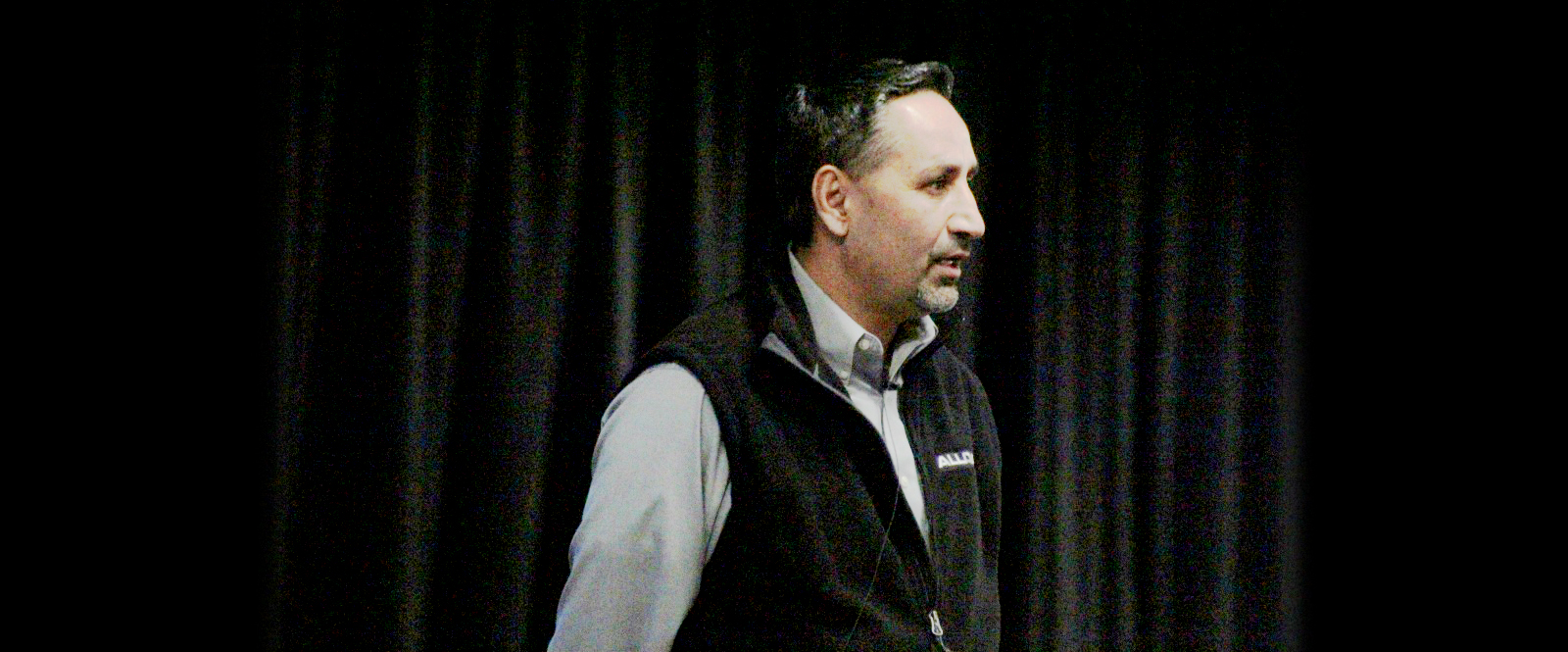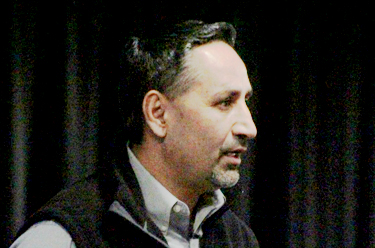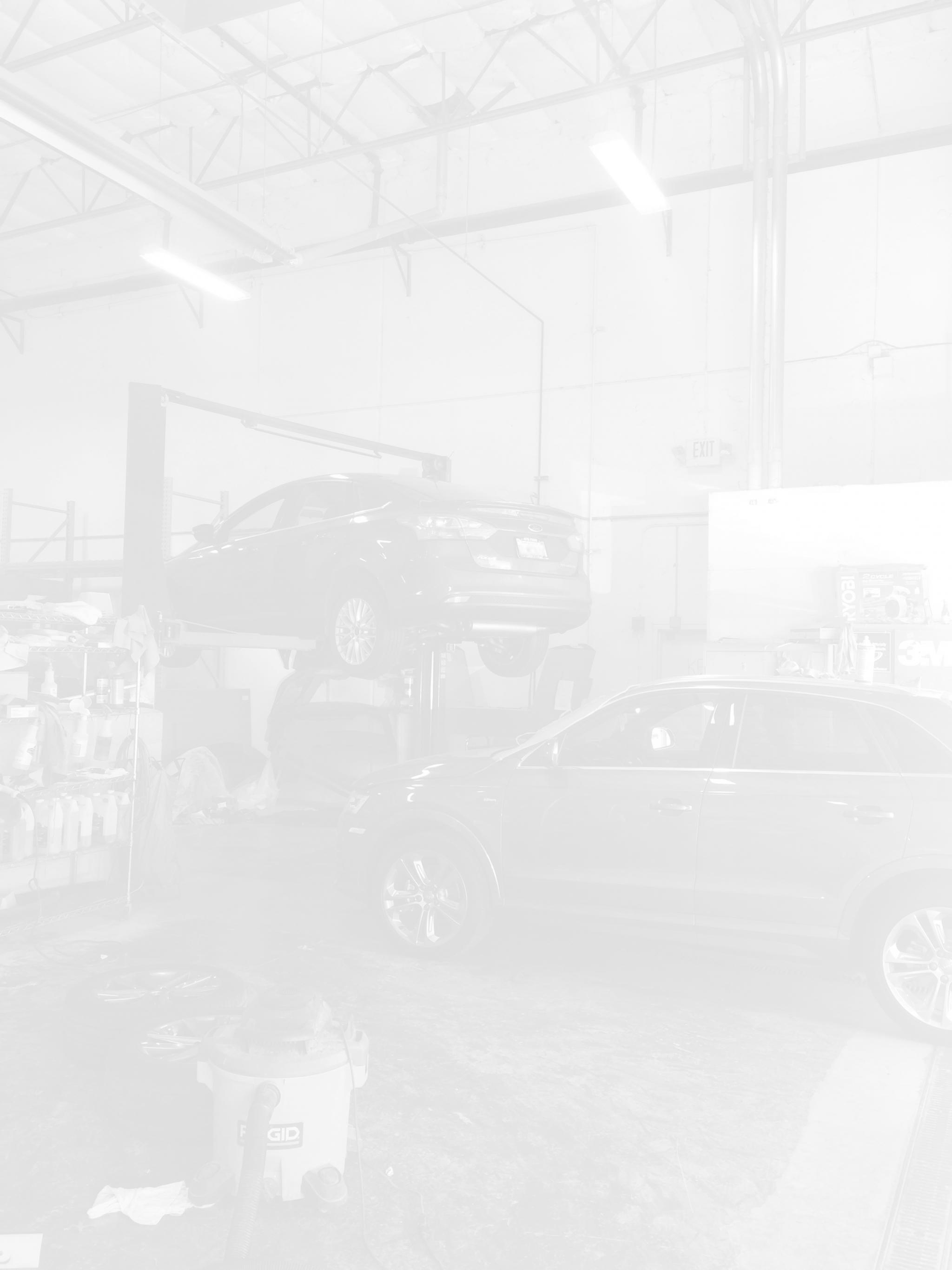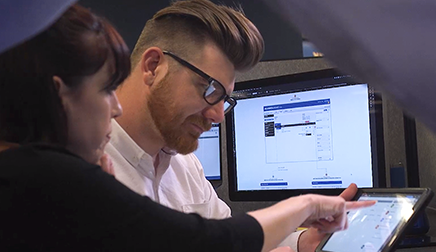
LOOKING BACK AT SEMA AND FORWARD TO 2023

Interview with Satwinder Mangat, President, ALLDATA
The ALLDATA News staff recently sat down with ALLDATA President Satwinder Mangat to get his feedback on SEMA, thoughts on technology trends affecting the auto repair industry, and plans for ALLDATA in 2023.
Editor’s note: The following interview has been lightly edited for clarity and brevity.
What were your key takeaways from the 2022 SEMA Show?
Walking around at the show, talking to our customers and show attendees, two things were clear. One is that the excitement is back. There was tremendous excitement around cars and the auto aftermarket – back to pre-pandemic levels. The 2022 SEMA Show was 25% bigger than the 2021 show, with around 135,000 attendees and more than 1,850 exhibitors representing many industry segments.
EVs were the hot commodity for 2022. Sales were up nearly 82% from 2021 and now make up 5% of the total market, according to Edmunds data. By 2040, we’re looking at about a 50/50 mix.
Not only is the show back to pre-pandemic levels, but the auto industry is back in terms of innovation. Innovation from manufacturers, innovation in terms of ADAS technology, and innovation from exhibitors focused on unique custom vehicles. The industry is alive and well.
The second big thing is electrification. It’s the biggest buzz word in the market. The OEs are showing more and more electric vehicles, but what I saw back at my first SEMA in two years is the focus on EV performance. The driving excitement. The power you get from the motor.
At the SEMA breakfast opening day, they showed a video of an electric racing car taking to the streets around Las Vegas at high speeds, the kinds of speeds you don’t see in a traditional ICE car. That was power.
EVs were the hot commodity for 2022. Sales were up nearly 82% from 2021 and now make up 5% of the total market, according to Edmunds data. By 2040, we’re looking at about a 50/50 mix.
The market’s only going to keep on growing and at some point, we need to figure out all other things – the infrastructure, repair procedures, batteries, recycling the batteries, charging standards, range anxiety – before we see how quickly EVs take hold.
The bottom line is, we’ll still be working on traditional ICE vehicles for decades to come, but the market will have to adapt to the realities and challenges of electrification.
What else was trending at SEMA?
Because of the increasing complexity of vehicle technology, ADAS is picking up speed. Every single new car has ADAS. And with that, cars are becoming harder to modify and harder to repair.
Because of the ADAS Quick Reference tool that we have in our product, that definitely got some attention. All the shops and DIY users were looking at what tools and information they need to fix the cars properly, according to OEM standards, and they’re looking to us as a provider.
Auto body shops can no longer just fix the bumper, they can’t fix the lights, they can’t fix anything until they take into account the ADAS issues, including if, when, and how to recalibrate. They’re already running into these issues and realizing they need more information to fix complex ADAS-related damage.
To serve this need, we will continue to publish our content and provide updated OEM information on a consistent basis to our customers. That’s why ALLDATA is in a good place and our sales keep going up, because more and more shops and more and more users are realizing that they can’t fix the car without having the right OEM information. That’s where we come in.
Editor’s note: In 2022, ALLDATA’s ADAS Quick Reference tool was honored with two industry awards: the PTEN Innovation Award and the SEMA New Product award.
Were show attendees feeling confident even though there’s talk of a recession since historically our niche has been pretty recession-proof?
Yes, I think so. Take new car sales. Rising sticker prices and interest rates have already dampened consumer demand and if the recession hits, people will put off buying new cars; they’ll be focused on fixing their cars. Shops are still going to be busy – they’re already busy – and they’re going to be buying tools and parts, so from a business perspective, we and other aftermarket players are in a good place.
If you look at the AutoZone/ALLDATA enterprise, we have the most data compared to anyone in our space. Our goal for many years has been harnessing the power of that data to provide trustworthy repair information and advice.
However, with inflation and other economic uncertainties, shop owners are definitely cautious, and are weighing all financial decisions before investing in new tools and equipment.
Looking forward, are there other emerging technologies that should be on shops’ radars?
We’re going to see more innovation with CASE (Connected Autonomous Shared Electric) vehicles.
Connected – meaning the vehicle has a live high-speed Internet connection.
Autonomous; it does not need a human operator to drive.
Shared – the vehicle has more than one regular operator, i.e. strangers who have shared ownership.
Electric – the electrons and their magnetic waves provide the power.
We’re seeing these technological advancements today and can expect to see them accelerate in the near future.
Another thing in the industry that will evolve is more use of robots in manufacturing and also robots in repair. That’s because there’s a severe shortage of qualified technicians and the vehicle complexities keep on growing. There’s a common problem and a common solution. How can we bring robots into automotive repairs for standard jobs?
It’s not going to happen instantly, but this is how the market is going to play out, because when there’s not enough skilled labor and the cars are becoming more complex, that creates a void for robots, at least for simple and repeatable repairs to start.
It already happened 15-20 years ago on the manufacturing side. Everyone was complaining about losing their jobs to robots and now most manufacturing is accomplished with robots doing the majority of the work.
This is how the industry changes. Just look at AR (augmented reality) and VR (virtual reality). Those technologies are still in the early stages, but they’re gaining momentum. You put on VR goggles, you’re in the vehicle, you see what the solution is – all these things will evolve.
Another technology that we’ve looked into multiple times is 3-D printing. How can you make your own tools in the shop? We’ve had 3-D printers going on 10-15 years, so it’s not a new thing, but it’s getting to that place where you won’t need to run out for a specific tool. You’ll be able to create in right in the shop.
Telematics will also play an increasingly important role in diagnostics and repair, much more so than it already is.
How do you define telematics?
Telematics is basically pulling car data, transmitting it, and then analyzing that data, like average speed and driving patterns. So, telematics means you’re transmitting data through that channel and then doing the analysis on the data.
With insurance companies, if your driving is better, you may get a better rate. When you rent a car, you may get a discount if you drive at or below the speed limit.
Another opportunity with telematics is predictive maintenance. As to the repair side, when something happens to the car, ALLDATA can provide the OEM information, including the probable causes, and the severity of repair. The dashboard already tells you when something is going on. Solutions will continue to evolve from there.
What is the biggest challenge facing shops in 2023?
The biggest challenges existed before and will be ongoing in 2023, perhaps even more severely post-pandemic.
The first is the labor shortage. Finding a good, knowledgeable technician is hard these days. Very hard.
I recently visited a customer, a good shop in a good location. The shop owner said, “Look, I may have to shut down. I can only do so much. I’m taking only cars that I can repair myself now.” That’s just one example. The pain is being felt in shops across the country.
The second challenge is cars becoming more and more complex. And even if you have technicians, there’s less and less time to train them because more cars are coming into the shops.
When I look at the labor shortage, the skill set required for a technician has changed. Today’s technicians have to do more than turn a wrench, they also need to have the computer knowledge, they need to know online auto repair technology. It’s definitely not your grandfather’s shop. Some even have a full-time person just devoted to researching OEM procedures and TSBs.
Finally, from the shop perspective, there are concerns about shop profitability. Naturally, because if they can’t find qualified technicians, they have to pay more.
Another challenge is lawsuits, or the fear of lawsuits. Vehicles are complex and shops are responsible for safely repairing them according to OEM standards. So now, if you’re sued, you have to prove that you followed all the OEM procedures.
That’s where ALLDATA comes in. There’s no other company that does in-depth publishing of unedited OEM content like we do. It’s becoming more and more popular because shops are increasingly aware how critical it is to repair vehicles back to OEM standards and document every process.
Editor’s note: As we cover in this month’s Collision Corner, 74% of collision shops use ALLDATA as their OEM resource, according to the latest Who Pays for What? survey by Mike Anderson’s Collision Advice and CRASH Network.
Finally, from the shop perspective, there are concerns about shop profitability. Naturally, because if they can’t find qualified technicians, they have to pay more. Inflation is hitting shops bottom line as well. So, profitability will be an issue in 2023. They need to find ways to fix the car properly and at the lowest cost.
What will ALLDATA be focusing on for 2023?
All the industry is going through a change, and ALLDATA is becoming more and more relevant. We were always relevant, but more so now that unedited OEM information is so critical to safely repairing vehicles.
Our first objective is to provide OEM information to our shops to help them fix the car properly based on OEM information and standards. We will continue to provide this unedited content with the speed at which we get it from the OEMs. We publish new vehicle information and updates daily, not quarterly like some of our competitors.
Our second objective is to help shops be more effective, more efficient, and more profitable. That’s why we also offer integrated shop management and diagnostic tools.
We listen to our customers’ feedback. We continually enhance our products and add features that shops are asking for, like multiple parts catalogs in Shop Manager and ADAS Quick Reference in our flagship Repair and Collision products.
The third priority is to make sure we’re bringing intelligent insights from data within that workflow. We connect the shop workflow, and we provide trustworthy advice – not a feeling or an opinion.
Another diagnostic tool we’re working on, Repair Forecaster, predicts the most likely component failures within 10,000 miles of the current odometer reading, based on data-driven analysis that even takes into account regional differences due to weather patterns, among many other data inputs.
To that end, we’re actively working on predictive solutions that can improve the cost of ownership based on leveraging the vehicle data. One solution we’re currently rolling out is ALLDATA Find-A-Fix, which allows shops to see top-ranked diagnostic solutions for a specific vehicle and DTC, including verified fixes and a list of probable causes. This new Find-A-Fix tool is available for a limited time at no additional cost with ALLDATA Repair and ALLDATA Collision.
Another diagnostic tool we’re working on, Repair Forecaster, predicts the most likely component failures within 10,000 miles of the current odometer reading, based on data-driven analysis that even takes into account regional differences due to weather patterns, among many other data inputs.
The other part is the DIY component. There’s an estimated 30-40 million medium-to-heavy DIYers in the market. When a vehicle is damaged, it requires trustworthy OEM information to be safely repaired, whether that’s in a shop or by an individual DIYer. If the DIYer isn’t fixing cars to OEM standards, everyone on the road is at risk.
ALLDATA is stepping up its efforts to reach DIYers, so if they want to fix their own cars, they have access to the latest OEM information for their vehicle.
What exactly is ‘data science’?
Data science is intelligence, basically. At a high level, you pose a question, then use the data to answer that question.
You look at where the data coming from, how clean is it, what algorithms need to be run, whether the data is significant or not significant, and a myriad of other analytics.
If you look at the AutoZone/ALLDATA enterprise, we have the most data compared to anyone in our space.
We have 5 million in foot traffic coming into AutoZone stores to buy parts. We have 14 billion in part sales. We have 15 million scans that we do at AutoZone stores every single year. AutoZone provides that as a free service, so we know what is breaking at that time and we know what part we are selling to fix it. We know what shops are searching in ALLDATA content every single day. In addition, hundreds of thousands of repair orders are written in our shop management system and other shop management systems.
The data that we have as an enterprise is unmatched in the industry. Our goal for many years has been harnessing the power of that data to provide trustworthy repair information and advice.
Why should shops – and consumers – trust the data?
When you add more and more data into your pool of content, your accuracy will improve. The car is going to break. And most of the time, it has similar components, it will happen in a similar timeframe. It may vary slightly depending on whether it’s a hot area or a cold area, but it’s going to be pretty close.
So, the more content that you add, the more accurate the data, the more trust you have. We’re not saying, “this is the fix,” but here are the most likely solutions based on millions of vehicle look-ups, scans, repair orders, and other data probabilities. Users confirm whether that fixed it.
The more get shops involved, the more the accuracy improves. The component that failed five years ago may not be the one that fails in the next 10 years; it may have been improved or replaced. The data will continue to reflect changes in the market.
That’s why we keep adding more content and make sure our data is mathematically significant. We continue to refine it, update it, and add to it. We’re currently at 150 million records and adding 30 million records every month in Repair Forecaster, one of our predictive maintenance products.
The more get shops involved, the more the accuracy improves. The component that failed five years ago may not be the one that fails in the next 10 years; it may have been improved or replaced. The data will continue to reflect changes in the market.
We don’t create data, we leverage data that already exists so vehicles can be repaired safely and accurately, according to OEM standards.
Speaking of data, what is ALLDATA’s position on the Right to Repair Act?
We support the Right to Repair Act. We want to make sure shops and vehicle owners have the freedom to fix their cars wherever they choose.
They may choose to go to the dealership for repairs; that’s one source and we support it, but we also support the vehicle owner taking the vehicle to any shop they feel comfortable with for the repair. We don’t want to restrict that.
Whether it’s fixed at the dealership, at the shop, or by the DIYer, ALLDATA will continue to provide the tools to make sure the car is repaired according to OEM specifications, along with technology solutions to enhance shops’ productivity, efficiency, and profitability.
Editor’s note: Stay tuned for Part II of our interview with Satwinder Mangat, in which he addresses the worldwide auto repair market and ALLDATA’s plans for expansion internationally.
Want to see how ALLDATA can improve shop efficiency? Check out our suite of products, each designed to contribute to both shop efficiency and productivity.
If you would like to read more articles like this one please subscribe to ALLDATA News.






